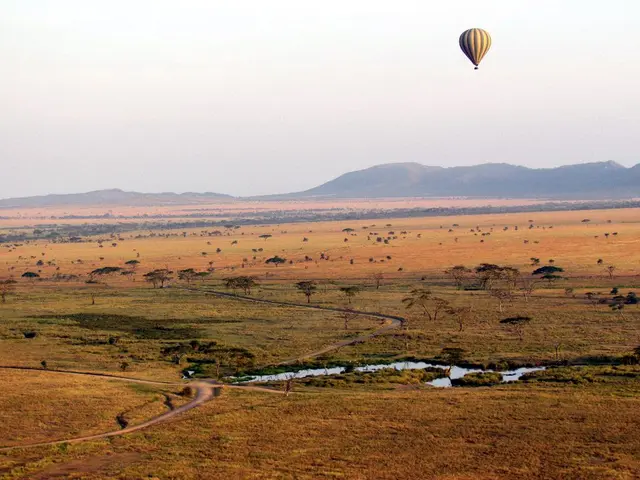Severe Monsoon Torrents in Uttarakhand: four-year record-breaking rains cause fatal floods and landslides, leading to a catastrophe
In the heart of the Himalayas, Uttarakhand has been battling an unusually intense monsoon season this year. The monsoon of 2025 has proven to be one of the most extreme in the region's modern history, breaking records that stand for over seven decades.
Dehradun, the state capital, recorded its heaviest single-day rainfall in 74 years on August 5, with around 200mm of rain within 24 hours. This intense downpour caused widespread havoc, including landslides, floods, the suspension of major pilgrimages like the Kedarnath Yatra, and severe disruptions statewide [1].
Compared to past years, the 2025 monsoon is described as the worst in the last four years, marked by continuous heavy rainfall, flash floods, and landslides from June through early August. This ongoing heavy rain and related disasters caused particularly severe incidents such as the deadly floods in Dharali village in early August [3].
Historical data indicates an increasing trend in extreme hydro-meteorological events like cloudbursts, flash floods, and landslides in Uttarakhand over the last decade, linked to climate change [2]. Climate change affects monsoons in Uttarakhand by allowing the atmosphere to hold more moisture, leading to heavier, less predictable rainfall and more frequent extreme weather events.
The most disastrous incident in Uttarakhand on August 5 was in Dharali village, Uttarkashi, where five people have died, over 60 are missing, and 11 soldiers are unaccounted for [4]. By August 5, the death toll had already reached 95% of 2022's total fatalities due to monsoon-related incidents. The monsoon has uprooted communities, threatened infrastructure, and put livelihoods at risk, with homes, hotels, and bridges being swept away in Dharali [5].
Rebuilding in this fragile Himalayan ecosystem will take time and be costly. Approximately 150 people have been evacuated so far. A partnership among government bodies, scientists, and locals is crucial to protect lives and livelihoods in Uttarakhand.
Staying informed about weather alerts is essential. You can monitor the IMD website, follow local news, use weather apps, and register for updates from the Uttarakhand State Disaster Management Authority. Safety measures during extreme weather include staying updated via IMD alerts, avoiding landslide- and flood-prone zones, following evacuation orders, keeping emergency kits ready, and maintaining distance from rivers during heavy rain [6].
Dr. Emily Greenfield, an environmentalist with over 30 years of experience, emphasizes the importance of raising awareness about environmental issues and promoting sustainable practices to combat the effects of climate change on regions like Uttarakhand [7]. As we move forward, it is crucial to learn from these events and work together to build a more resilient future.
[1] The Indian Express [2] The Hindu [3] NDTV [4] The Times of India [5] The Hindu [6] Uttarakhand State Disaster Management Authority [7] Dr. Emily Greenfield's Website
- To aid in understanding and mitigating the impact of climate change on regions like Uttarakhand, it would be beneficial to enroll in relevant environmental science courses.
- Given the increasing trend of extreme hydro-meteorological events in Uttarakhand, research focused on weather forecasting and environmental science is vital to better preparation and response.
- Organizations working on environmental sustainability, such as NGOs, could provide valuable resources and insights into long-term strategies for disaster management and resilience in Uttarakhand.
- Along with monitoring weather alerts, staying up-to-date on environmental events and conferences focusing on ESG (Environmental, Social, and Governance) could offer opportunities for collaboration and knowledge-sharing.
- To effectively address the challenges faced by Uttarakhand during extreme monsoon seasons, it's necessary to publish comprehensive reports detailing the current state of the environment, research findings, and actionable recommendations.
- As Uttarakhand rebuilds after this year's devastating monsoon, prioritizing sustainable construction practices and infrastructure that are resistant to extreme weather events is crucial for long-term sustainability.
- As we reflect on this year's monsoon disaster in Uttarakhand, it's essential to emphasize the significance of environmental awareness, encouraging sustainable practices, and fostering collaboration among government bodies, scientists, and locals to ensure a more resilient future for all.








